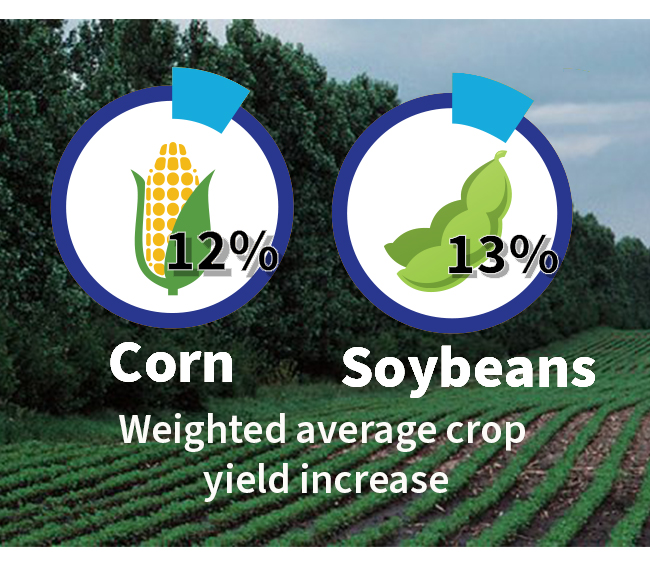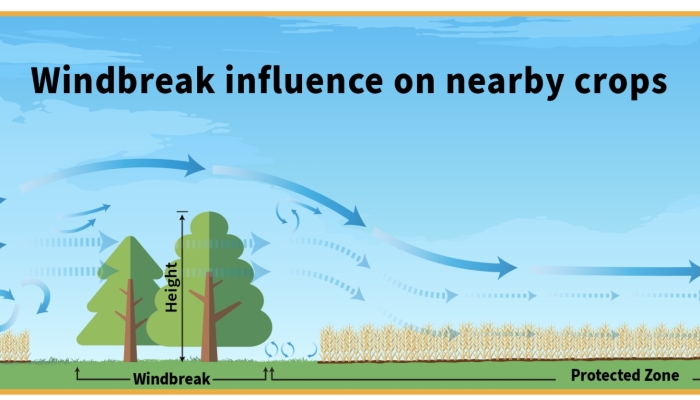Can windbreaks increase crop yields?
From “Working Trees”, U.S. Department of Agriculture Forest Service
Windbreaks can serve many purposes in agricultural operations such as preventing soil erosion, providing wildlife habitat, and sequestering carbon. Another beneficial attribute of windbreaks is their ability to protect crops and improve crop production.
 Wind can have detrimental effects on soil and agricultural crops. Persistent winds can decrease soil temperature, increase water loss, and lead to erosion. Wind exposure can damage crops, causing yield and quality loss through desiccation, abrasion, bruising, and breakage. Slowing the wind can have indirect positive impacts as well. By redirecting the wind, windbreaks create microclimates that facilitate pollinator visits, enhancing crop production.
Wind can have detrimental effects on soil and agricultural crops. Persistent winds can decrease soil temperature, increase water loss, and lead to erosion. Wind exposure can damage crops, causing yield and quality loss through desiccation, abrasion, bruising, and breakage. Slowing the wind can have indirect positive impacts as well. By redirecting the wind, windbreaks create microclimates that facilitate pollinator visits, enhancing crop production.
A windbreak often increases crop yields enough to compensate for the land taken out of production in the windbreak’s footprint and any yield loss occurring directly adjacent to the windbreak. However, not all crops respond to the same degree and results can vary depending on local conditions. For example, in dry conditions, crops struggle to maintain adequate moisture, so increased transpiration and loss of soil moisture due to heat and wind can be devastating. Typically, positive yield benefits of windbreaks are most significant in drier years.
There are trade-offs between how much of the field is taken up by the windbreak and how much benefit is created by the windbreak. To maximize yield, generally less than 5 percent of the field should be planted to windbreaks. To achieve this, most crop protection windbreaks are made up of a single row of tall trees, as this occupies the least amount of space, protects area downwind, and decreases the number of windbreaks needed. In general, windbreaks increase crop yields most in the area of the field that is 3 to 10 times their height downwind from the windbreak, with some benefits seen even at 15 times the windbreak’s height.
Notably, due to climate change, growing seasons may include frequent and intense droughts, heatwaves, and unusual weather patterns. Windbreaks are a key tool to help producers manage risk, maintain crop production, and enhance crop quality in the face of these challenges. Windbreaks can also support other soil health and climate adaptation practices, such as cover crops.
Agricultural producers should consider how a windbreak can best serve their farm. Important factors in planning include windbreak density, area, and height, prominent direction of wind, and crop species needing protection. Collaborating with natural resource professionals can help ensure a windbreak is designated and located to meet each farmer’s needs.

